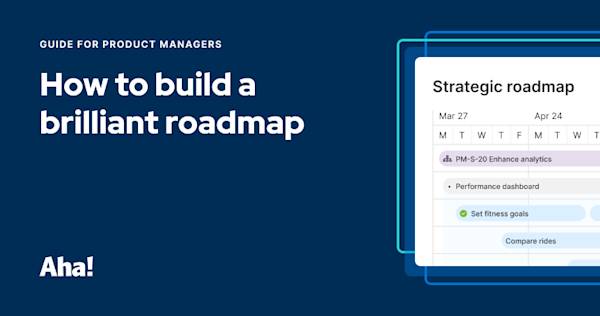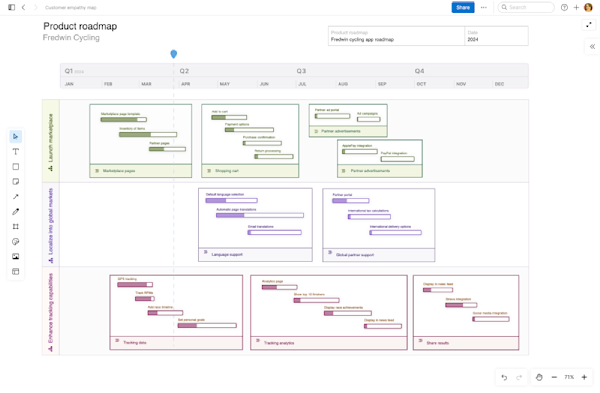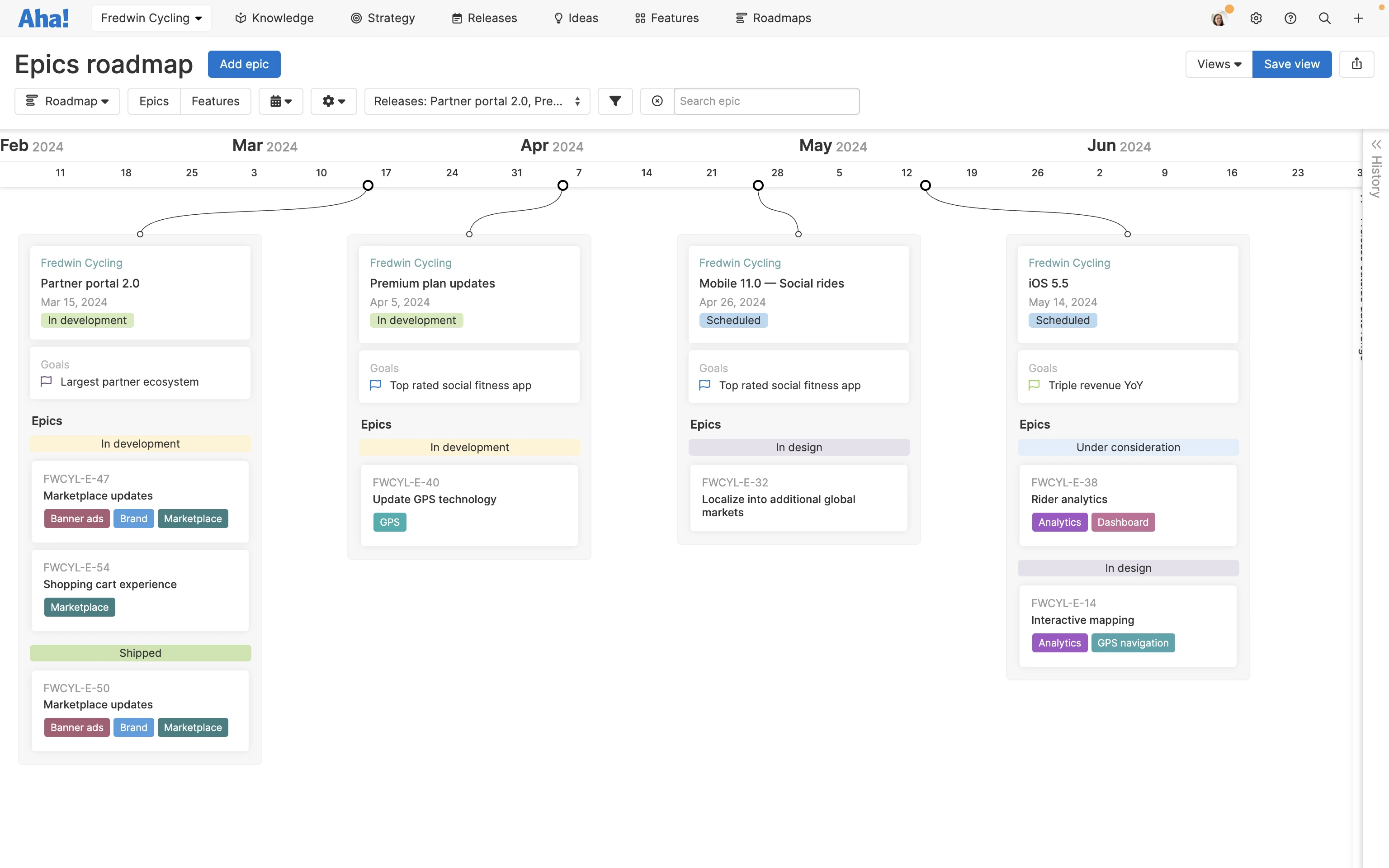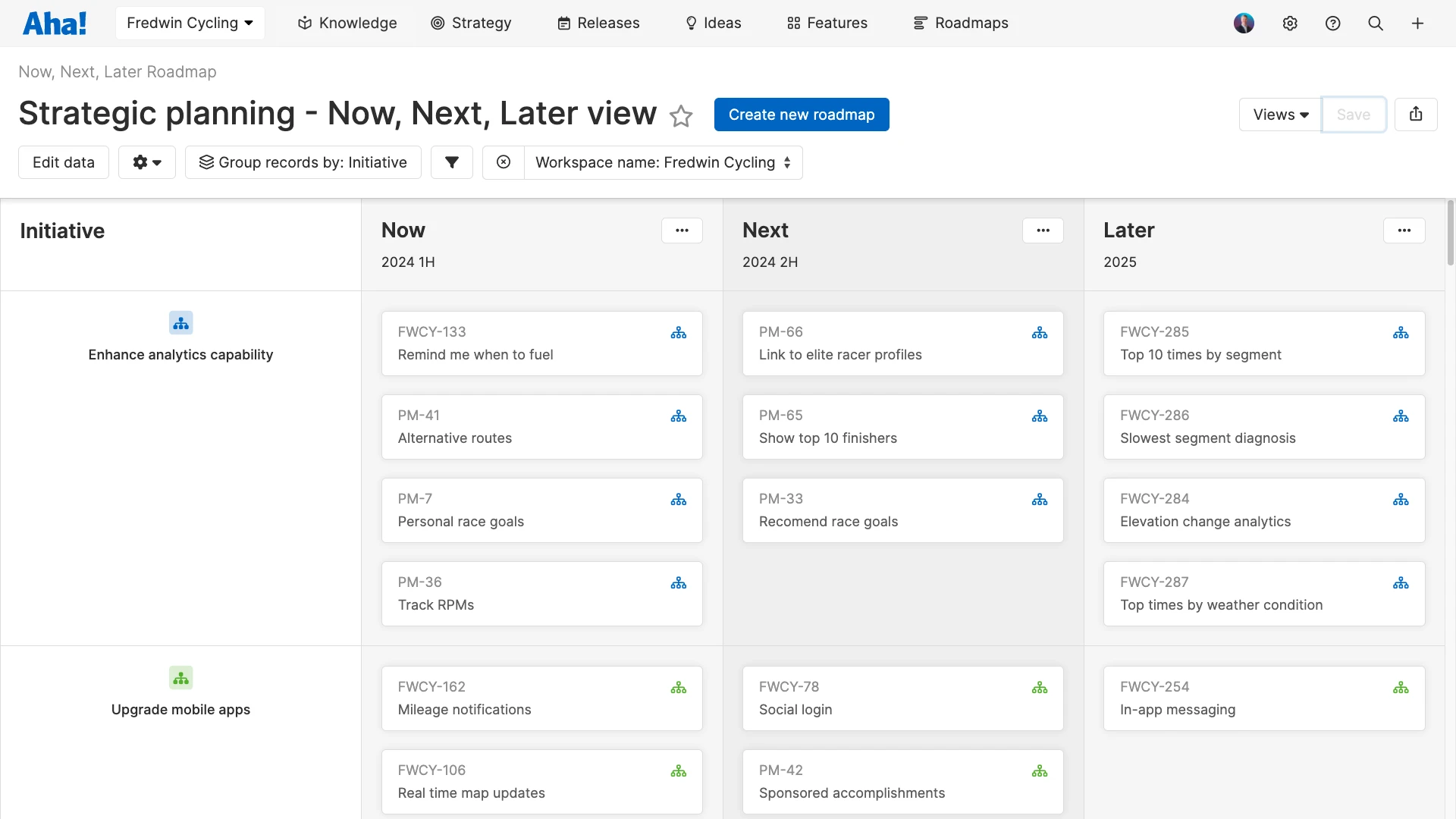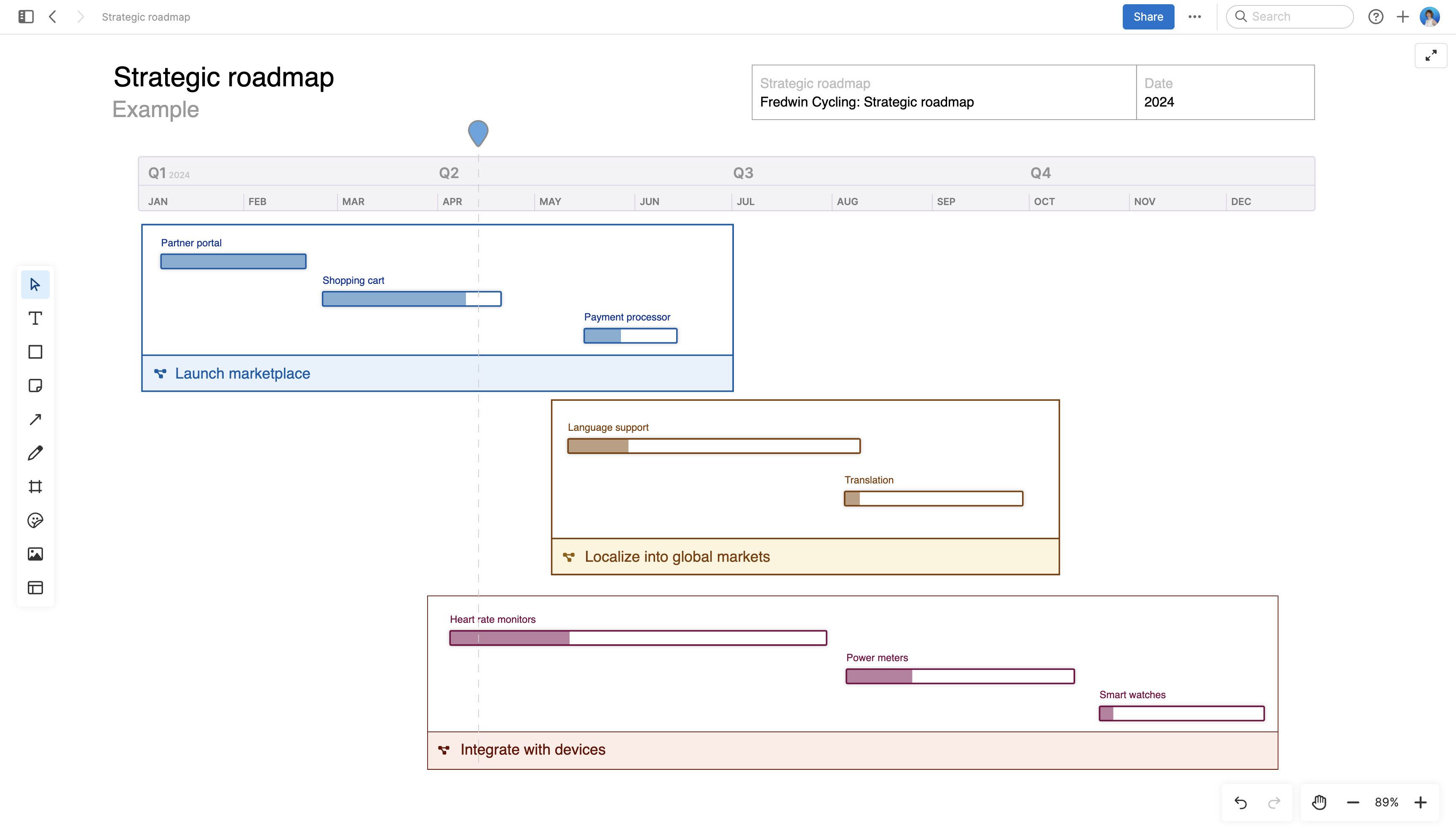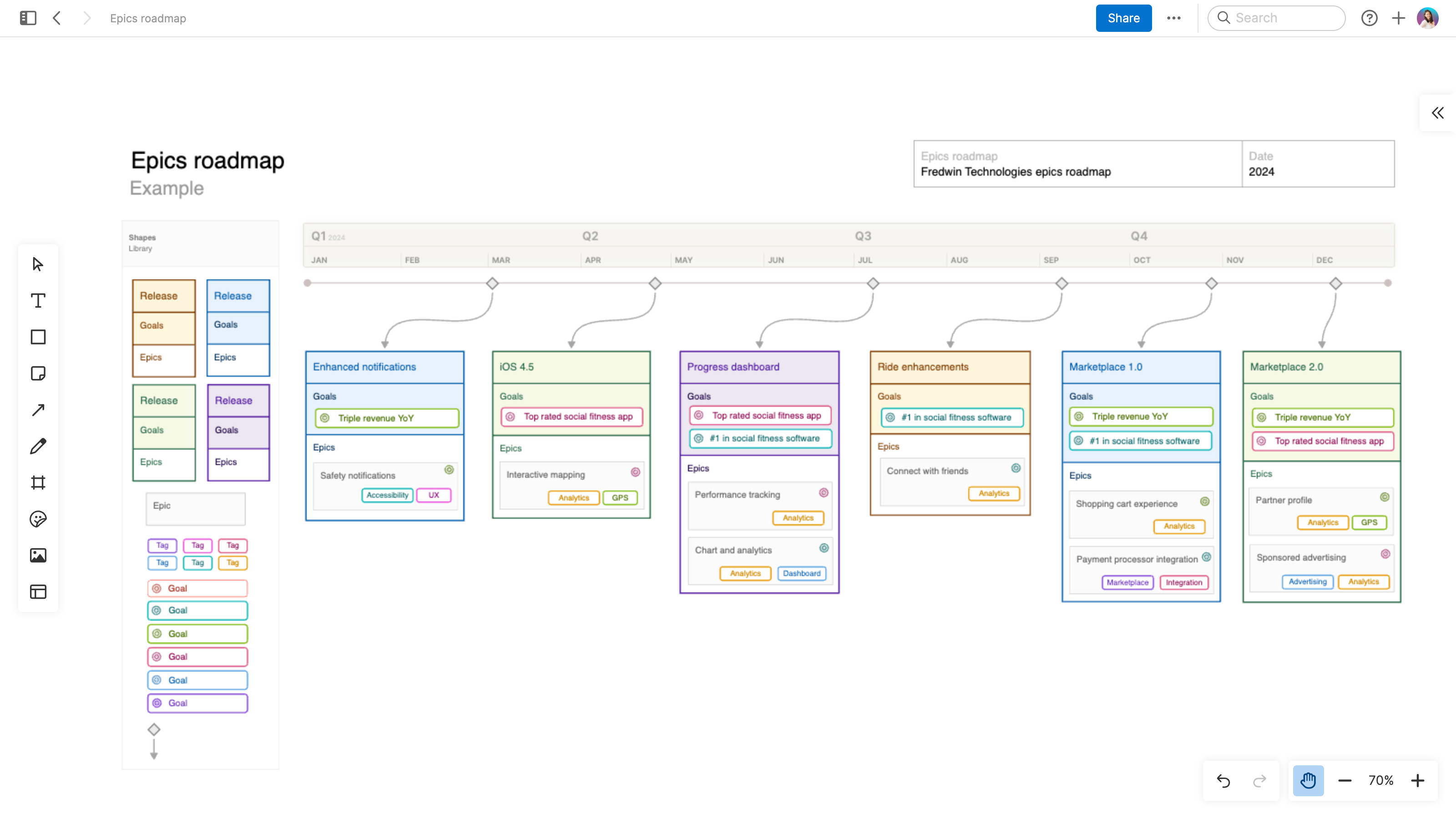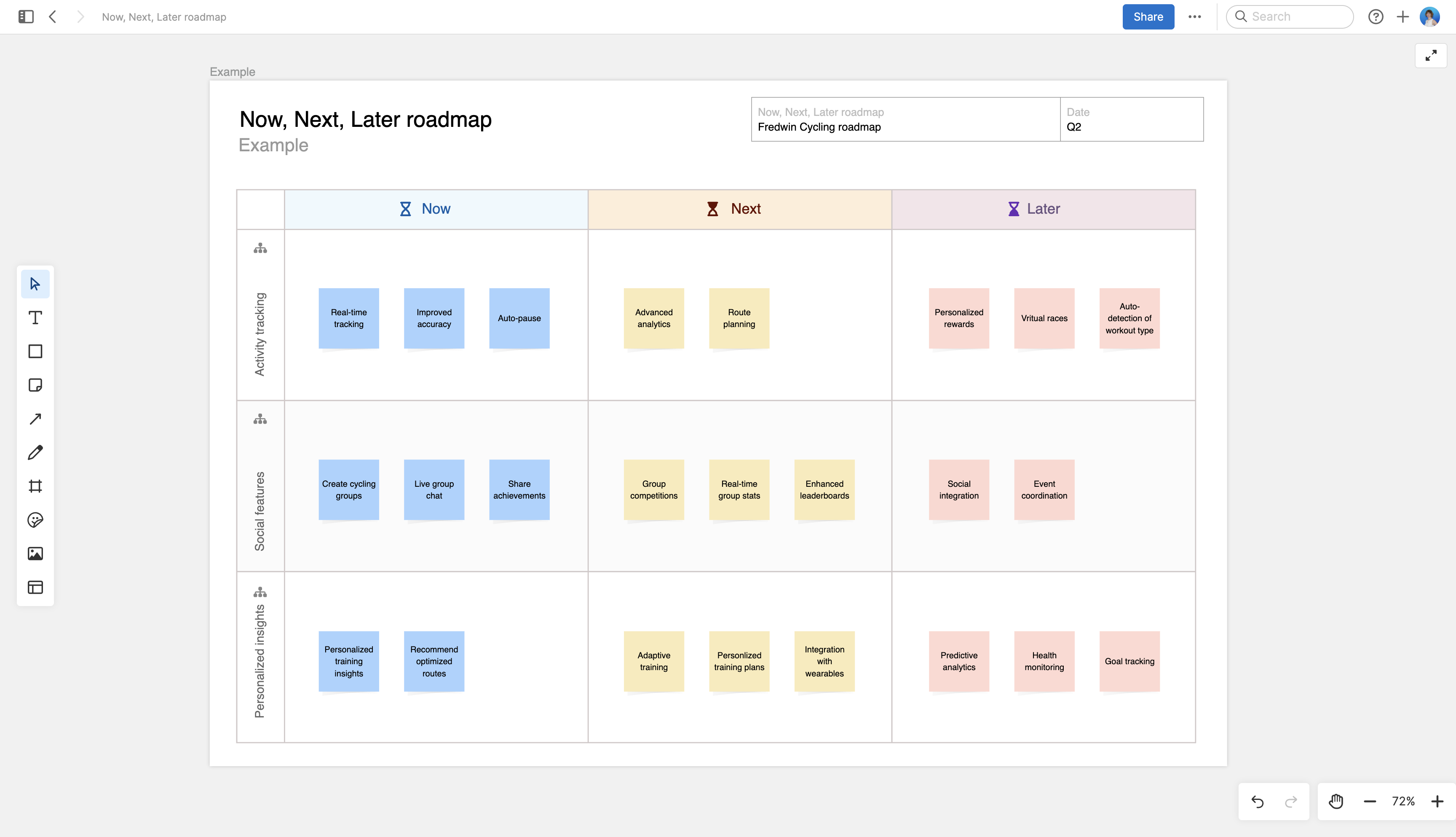How to build an agile roadmap
Last updated: March 2025
An agile roadmap is a flexible planning tool that helps teams map out key initiatives, releases, and features over time. It provides structure for agile teams while allowing for adaptation as priorities evolve. Taking an agile approach to creating a roadmap means focusing on iterative development and being ready to adjust your plans based on evolving priorities.
It is informed by high-level strategy and provides transparency for stakeholders and teammates, typically including components like upcoming product releases, epics, and features. Unlike a backlog (which is a catchall list of new product updates and bug fixes) or a sprint plan (which is just about development work), an agile roadmap captures how you will ship a holistic customer experience.
Build an agile roadmap in Aha! Roadmaps — with a free trial.
Agile roadmaps are most useful when you are working on something new. You need to have a plan for the "why," the "what," and the "how" of what your team will build. This could be the release of a new application version, a new feature set, or an entirely new product.
In looks and in purpose, agile roadmaps closely resemble most other product roadmaps. So, what really makes an agile roadmap "agile"? The key difference is in how you use it. The idea is to emphasize adaptability so you can respond rapidly to real-time feedback and changing needs. To accommodate this approach, agile roadmaps are often shorter-term and more lightweight than traditional product roadmaps.
This guide includes examples and best practices to help you learn how to build agile roadmaps — so you can drive more value, faster.
Jump ahead here:
How do product roadmaps work with agile development?
You might be thinking: Our plans are constantly changing. We move too fast to roadmap! But the idea that agile teams can eschew long-term planning is no longer accurate.
Of course, a propensity for speed is essential to any product development team. But it can also create whiplash. When upfront planning is ignored, horizon lines shift constantly. Others can be left wondering what is happening and when they lack clarity about what the team is working on or prioritizing. And in the end, you might not reach where you intended to go (and it will not matter how fast you went).
You need to act quickly while making sure that you pursue the right work to support your strategy. This is why an agile roadmap matters. In reality, roadmaps complement — rather than conflict with — a fast and iterative workflow. Plenty of agile teams rely on roadmaps to align everyone around what you are planning to deliver, when, and why it matters to customers and the business.
Agile roadmaps can also be super adaptable. With the right tools, you can create lightweight versions of your product roadmap that are quick to update as plans evolve. You can also keep things high level without firm dates, focusing on key initiatives or themes of work versus specific features.
So no matter what type of agile methodology you use or how strictly your team follows it, you can benefit from creating an agile roadmap. In addition to making sure you are investing in the most impactful work, it will help you make better trade-off decisions, measure progress, and ultimately deliver more value.
Related:
What does an agile roadmap look like?
In general, most agile roadmaps include these components (see the visual examples below):
Product goals
Strategic initiatives (also called agile themes)
Releases and/or epics
Features or user stories
Time frame for delivery (including sprints)
Progress or status indicators
But the details of your agile roadmap will depend on your company — both in terms of planning and aesthetic. For example, a startup working to deliver a new product to market will have agile roadmaps that look very different from those of a larger enterprise. The table below outlines how key elements might vary:
Agile roadmap aspect | Startup | Enterprise |
Team involvement | Founders, product manager, engineering lead | Larger cross-functional product teams |
Purpose | Delivering disruptive functionality and incorporating feedback as quickly as possible | Balancing new product innovation with enhancements to existing products (which might be captured on a separate product roadmap) |
Visuals |
| Longer-term agile roadmaps to account for scale and complexity (can be theme-based or time-based) |
Agile roadmap examples: What they look like
Below are a few different examples of agile roadmaps that show varying levels of detail. Your agile team might use one type or all three depending on your organization's maturity and the product development phase. If you are curious to try these agile roadmaps yourself, check out the templates later in this guide.
Strategic agile roadmap
A strategic roadmap can help clarify the "why" behind what you are building. In this example, the roadmap shows business goals, success metrics, and progress on the left. Major development efforts, or strategic initiatives, are visualized as bars within swimlanes on the right. Progress on goals can be updated in this view as agile development gets underway.

